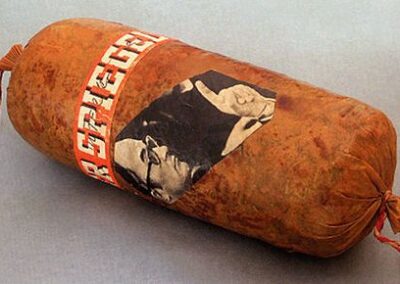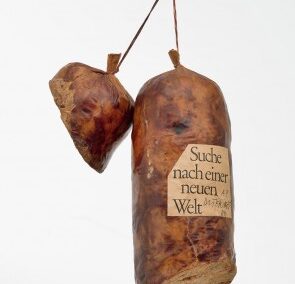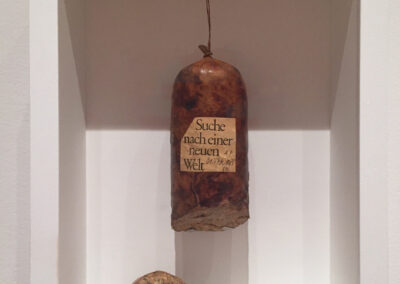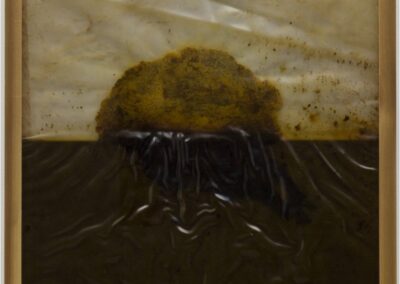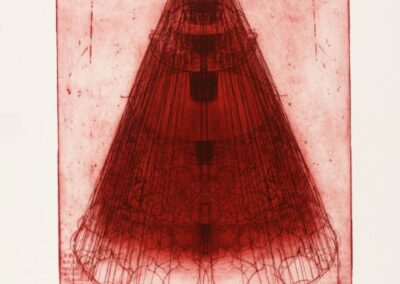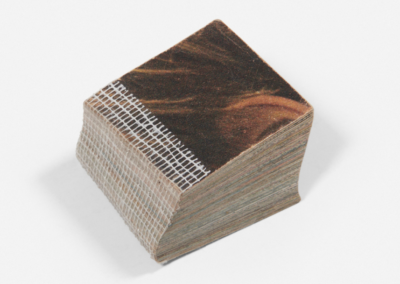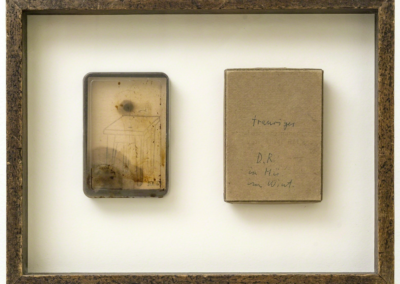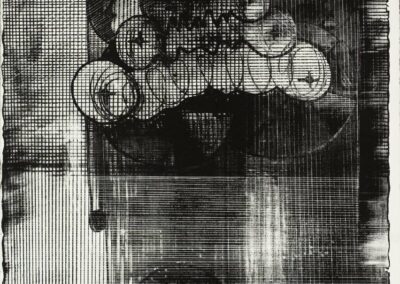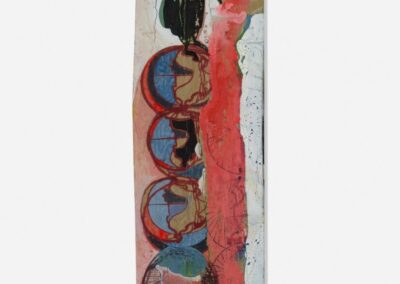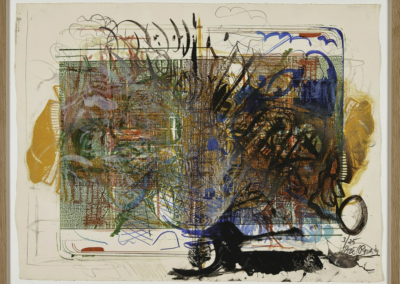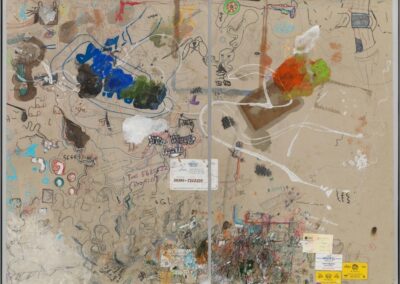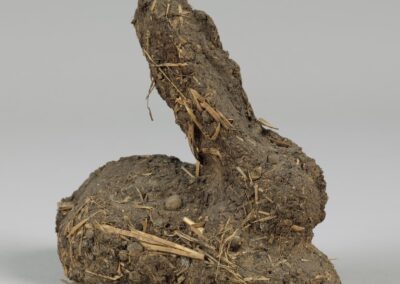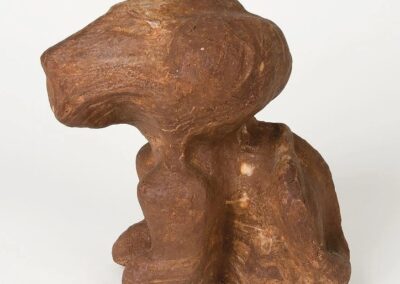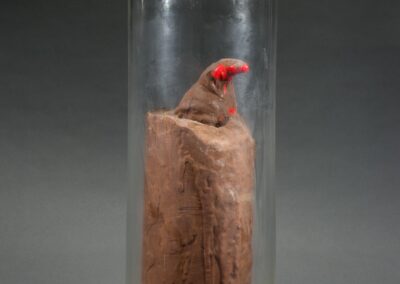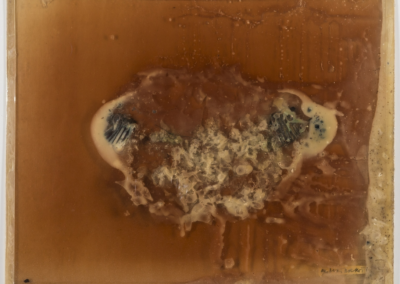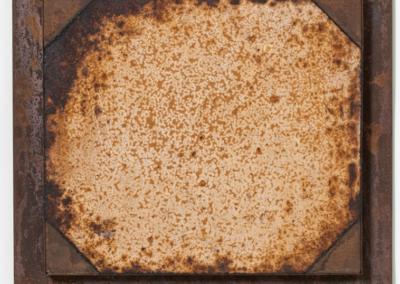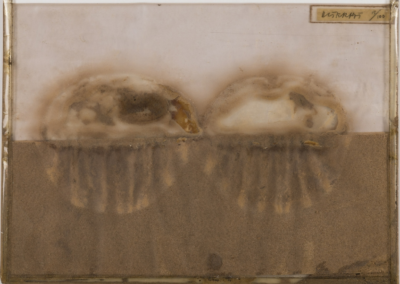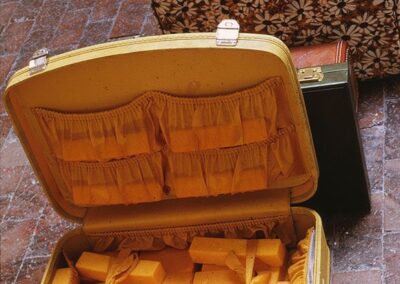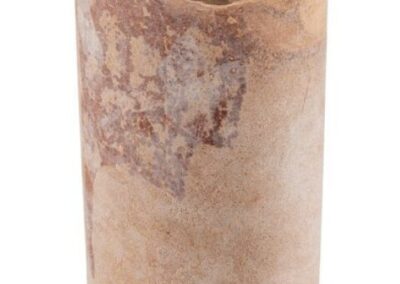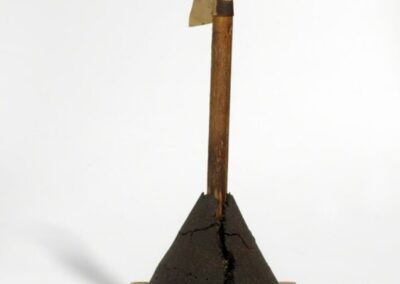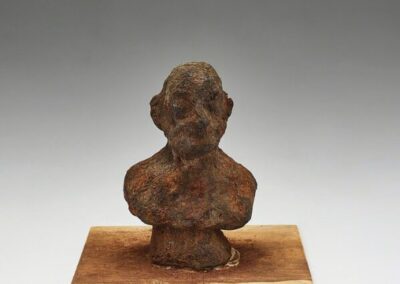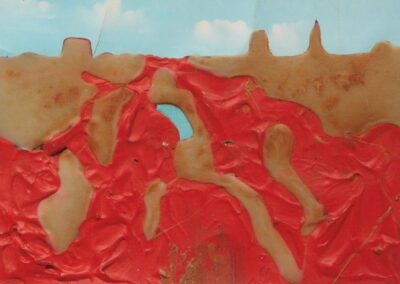Our next Artist You Need To Know is Dieter Roth (1930 – 1998).
Roth was a German | Swiss | Icelandic artist who gained recognition for his diverse body of work, which included artist’s books, editioned prints, sculpture, and creations from found materials, including rotting food stuffs. He also used the aliases Dieter Rot and Diter Rot. As much of a provocateur as he was an artist, Roth was known both for his eccentricity and prolific practice.
He has often spoken of his aesthetic as being ‘organic irreverence’ in tandem with his interest in ‘decaying substances’ in his artmaking. Often associated with the Fluxus movement, his work is more complicated and contradictory than that group.
From here : “Briefcases of rotting cheese, minced literature in a sausage case, and chocolate busts of his own face have all featured in the innovative, radical, and occasionally challenging artistic practice of Dieter Roth. Best known for pioneering the artists’ book as an artwork in its own right, the experiments with perishable goods, strange contraptions, and decay that characterized his gallery practice were always pursued alongside an enduring fascination with publishing and the written word.”
“When I was young I wanted to become a real artist. Then I started doing something I felt wasn’t real art, and it was through this that I became a well-known artist.”
The first three images below are from Roth’s project Literaturwurst [Literature Sausage] (1961 – 1974) : “Each book was made using traditional sausage recipes, but replacing the sausage meat with a book or magazine. The cover of the edition was then pasted onto the skin of the sausage and signed and dated.” You can learn more about this project here.
He was born in Hannover to a German mother and Swiss father : when WW II broke out, he was sent to Switzerland and as a child there he was surrounded by artists and actors who had also fled Nazi Germany. At this time, in Zürich, Roth was encouraged to paint and write poetry. He wouldn’t be reunited with his family until 1946, when his parents joined him in Switzerland. They were now destitute. In 1947 they relocated to Bern, and Roth had an apprenticeship for a commercial art company (one of the clients was the local cheese union, which is interesting considering future works that used this material). During this period, Roth encountered the works of Paul Klee which deeply affected him (“a shock that [was to] grow into an obsession”) and found his schooling in commercial art to be too restrictive and much less inspiring than current trends in modernism.
In 1953 Roth began a collaboration with Marcel Wyss and Eugen Gomringer that took the form of the magazine Spirale (nine issues were published from 1953 to 1964). Roth, during this period, could be considered part of the Concrete Art movement. This was a productive period for Roth, as he exhibited in a number of group shows in Switzerland, was also writing poetry and began working on his organic sculptures : he also experimented a bit with Op Art. He met Daniel Spoerri in 1954 which was a major landmark in Roth’s career, as Spoerri would establish Editions MAT. This was a publishing house for editioned art books and sculptures : many of Roth’s early works were produced by Editions MAT.
He married Sigríður Björnsdóttir In 1957 : she was Icelandic and they settled in Reykjavik. This isolation from the major artistic centers of Europe spurred Roth to produce a number of significant artist’s books. Among these seminal works are Bok [Book], 1958 (where Roth cut holes in the pages and dispensed with the codex, allowing the reader to rearrange the pages in any order they wished) and Daily Mirror Book, 1961, which employed found newspapers that was cut into 2 cm squares and then rebound as a 150-page book.
“I make art only to support my habit, which is to write and publish books.”
Johanna Drucker (a book artist, author and cultural critic) has asserted that “There would be no way to translate a Dieter Roth book into another medium – the idea of the works is inseparable from their form as books and they realise themselves as works through their exploration of the conceptual and structural features of a book.”
Dieter Roth was awarded the William and Norma Copley Award in 1960 : he used the monetary component and the funds which normally went towards a monograph to produce his most ambitious book work at that time : The Copley Book (1965) which explored, in a semi-autobiographical format his process of book making, utilizing his usual modus of deconstruction and irreverence. In 1965 Roth also had an exhibition at Arthur Köpcke’s gallery in Copenhagen and later (in 1960) he showed at the Festival d’Art d’Avant-garde in Paris. This period also marks the beginning of his nomadic lifestyle : Roth would roam across Europe, Iceland and the United States while continuing to work and exhibit. This was a lifestyle he continued for the rest of his life.
Roth would have associations with the Fluxus Art Movement (which spanned from 1959 to 1978, loosely) over his career, but would also move into installation artworks, biodegradable art and continued his use of multiples (whether in print or sculpture, or often straddling the two) throughout his career.
From the TATE : “Although he himself was interested in collecting and archiving, Roth’s complex and extremely varied oeuvre presents museums with a difficult task when it comes to the preservation of his works. Beyond the ironic and contradictory statements which he made, this is due to the nature of the works themselves: complex installation art; monumental objects and sculptures made from edible substances, such as chocolate, sugar, yoghurt, cheese, bread, mince and spices, which beetles and micro-organisms then transform. And while mutability and transience are inherent in all works of art, Roth accelerates these phenomena, making them visible within a short period of time. Mortality is, in effect, paraded in front of us. And so, when setting aside the ambiguity of the works for a moment, we can see that Dieter Roth was extremely interested in the structure of decay – its form, play of colours, the variations of putrefaction and mould, and their ornamental aspects, the natural mutation of things – and felt that chance, as a shaping element, should be a part of the creation process.”
The first two images below are from one of Roth’s more famous – or infamous – installations. The artist offered a number of suitcases (thirty seven in total), left in the middle of the floor of the Eugenia Butler Gallery in Los Angeles, filled with large blocks of cheese, which were closed and opened as the exhibition progressed. An attempt was made to close the show by the local health department, and the smells and other visceral aspects of the work ‘announced’ it to visitors long before they could visually engage with the installation. There was also cheese installed on the walls that left marks and degraded in the space, creating ‘drawings’ on the gallery walls.
From Art Story : “Staple Cheese was Roth’s first solo show in America, having originally made a name for himself in Europe, and the public outcry and scandal of the health authority did much to cement his rebellious image. Writer Matt Stromberg claims that the work remained in the minds of all the artists on the L.A. scene of the period, and was one of the most impactful of its time.”
A number of major retrospectives of Dieter Roth’s work were mounted in Europe and the United States in the 1980s, as well as large scale exhibitions of several new works. In 1982 Roth represented Switzerland at the Venice Biennale. He was awarded the Genevan Prix Caran d’Ache Beaux Arts in 1991.
Dieter Roth died on 5 June 1998, in his studio in Basel, of a heart attack. He was buried at Arnarstapi on Snaefellsnes, Iceland.
The Dieter Roth Academy was founded in May 2000 by fifteen close friends and colleagues of Dieter Roth : the institution is dedicated to not just his work but also his ideas about the importance of travel and less pedantic approaches to art education. An extensive listing of his accomplishments and exhibitions can be seen at their site.
Much more about Dieter Roth’s life, awards and work can be seen here and here. A site devoted to his book works can be enjoyed here.
From MOMA : “Believing that both art and man should grow old and die, Roth made chocolate and birdseed busts of himself, leaving them to decompose in a garden to the delight of hungry birds. And as they decayed, his work began to grow in ways beyond his control, welcoming an element of nature’s unique brand of chance. In his desire to rot, Dieter Roth created a legacy that continues to inspire and engage younger generations of artists and audiences. Perhaps despite himself, his work lives on.”

